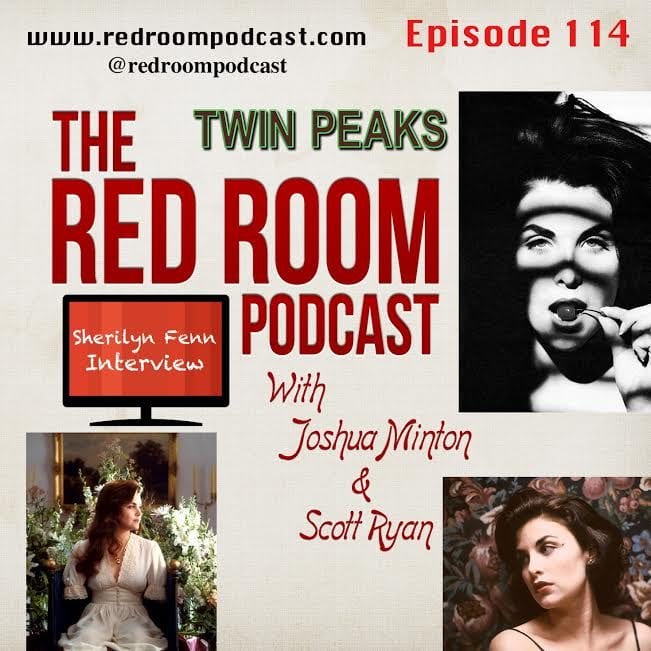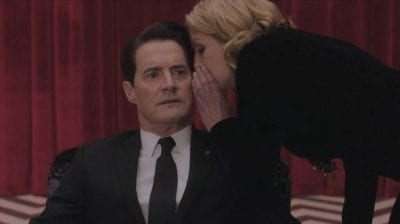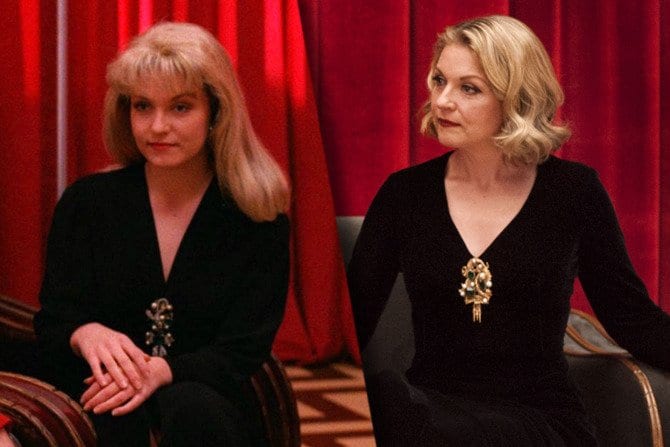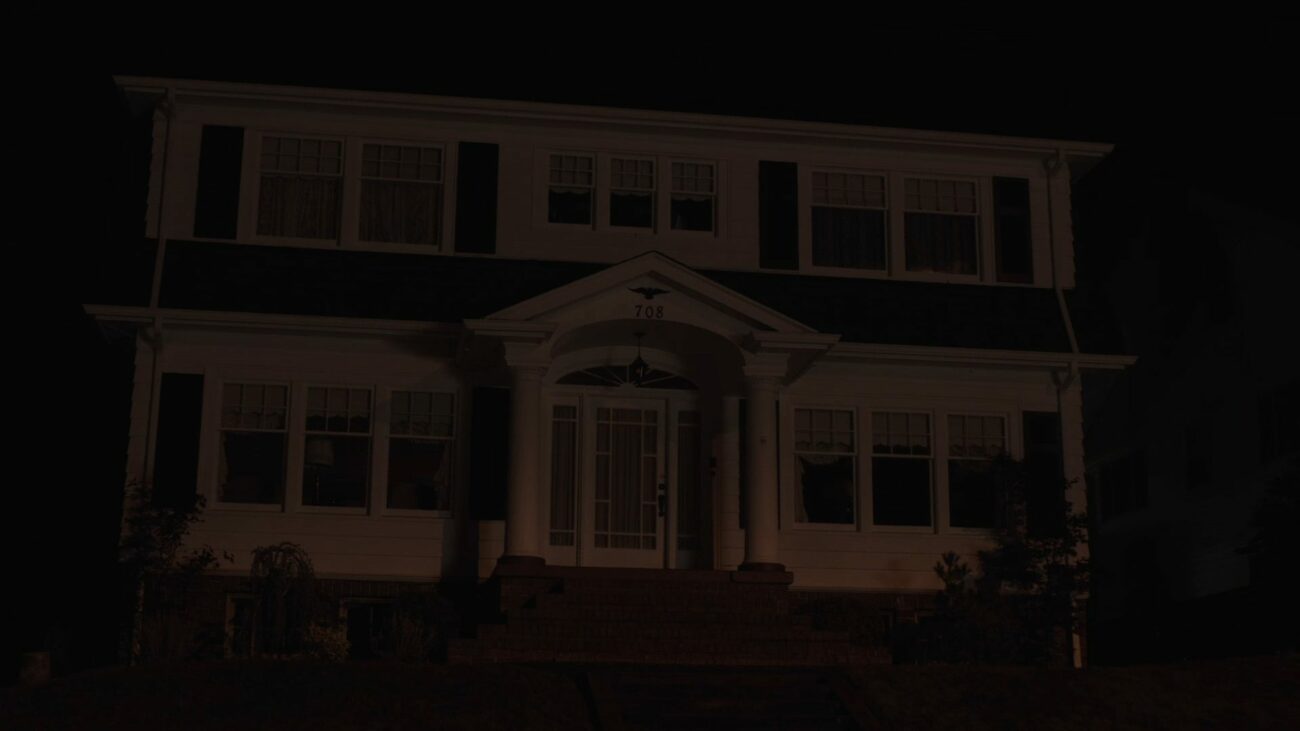I am a terrible Twin Peaks scholar, a total poser. I didn’t watch the show until 2010. I could have. I remember seeing the VHS boxes for Fire Walk With Me in the video rental store. I could have checked it out a thousand times, but I never did. Therefore, I will never claim to be a Twin Peaks expert. However, I know what feels right in art. I’ve trained in experiencing, interpreting, and writing stories for decades. I’ve turned storytelling into a lot of sold software, and I’ve never lost faith in the power of the written word to move our culture in the direction of better.
When I first watched Twin Peaks and Fire Walk With Me, Obama was halfway through his first term as President. The show was already twenty years old with a 1% chance of returning, proving that the odds predestine nothing in our short lives. We are lucky that Twin Peaks: The Return was written, shot, edited, and broadcast in our lifetime. It was one of the few majestic events that happened over the past ten doom-filled years. For the past several of those, I have stared closely at this profound work of modern art, and I want to convey why future critics need to study and write about Twin Peaks: The Return.
I don’t read many other theories about Twin Peaks anymore. My experience with it is now so intimate that it has achieved a balance between aesthetics, intellect, and emotions. I know how nearly every part makes me feel, and I have opinions about why backed up with numbers put into categories and graphs. I found a reflection of myself in this art that continues to change, challenge, and excite me. This is why I study Twin Peaks: The Return.
But I must take breaks from thinking about Twin Peaks, or else it drains the joy from other areas of my life. In this predatory fashion, addiction to art is like any other, drawing us away from balance towards obsession. Like many of you, my obsession with Twin Peaks:The Return began with the twin tweets announcing the show was coming back.
Watching Seasons One and Two and the film was fresh in my mind. Scott Ryan and I were doing good work on the Red Room Podcast. We’d had great interviews about The Missing Pieces and the Twin Peaks Music Archive released around that time. It was a high point in the appreciation for Twin Peaks as an anachronistic piece of commercial art created in a decade hot dipped in false hope, just before the War on Terror ripped through the world and changed everyone’s life. We knew it was terrible, but we had no idea how bad it would get. It would take one hell of a piece of art to pull all that trauma together and feed it back to us in a way that moved us forward through our feelings. Twin Peaks The Return succeeded in these expectations and set a new standard for Proper Art in our modern age. It’s worth serious study.

I had a chance to experience existing art in a new way when Twin Peaks returned. I no longer had to suffer the filter of other fans’ experiences to engage with it. Instead, I would have my own experience and seize that precious opportunity for all it was worth.
At this point, I’ve invested several hundred hours watching, thinking about, writing about, and publishing my thoughts and emotions about Twin Peaks The Return. I can hold my own in a calm conversation about this work of art with anyone in the world because I feel little need to defend my perception beyond committing to the purity of experiencing art together as individuals in a diverse community. I know what makes me feel good about Twin Peaks, and I’ve grown effective at communicating why and how. I am grateful to still find inspiration, hope, and surprise in a work of art produced in the twilight of American Democracy. This is why I study Twin Peaks: The Return.
My curiosity for and contemplation of The Return hasn’t let go since I watched the first second of the show. My study of this art has become a mirror into my psyche and a source of comfort, a pole star by which I can navigate the tumultuous emotional waves amplified by the seasons growing us older to the tick of the clock. The Return brings me comfort as I am pushed forward into life, still fighting the best fight I can find inside myself. Dale Cooper fights this same good fight in The Return. It’s worth studying because it’s a universal challenge for all human beings to overcome what is worst inside them by bringing out what is best.
It feels good to me on all levels (intellectual + narrative + emotional) to assess Dale Cooper’s triumph over evil in Twin Peaks: The Return. This art has an ancient message that we must shed everything to enter the final passage between this world and whatever comes next. We must relinquish all at the end, standing outside the last door of our most secret internal space, the holy of holies. We must release attachment to everything, including identity and our most sacred missions of service.

The Return is modern mythology, conveying a story as timeless as the human experience, concerned with the balance between positive and negative energies coursing through our biomes every living moment. Consider the selfish and cruel emotions humans feel and act from to inflict cruelty on life around us. Then consider the warm and giving feelings that inspire acts of bravery and sacrifice in our world. Why do so few consistently act with difficult benevolence instead of the more reasonable ways we greedy masses harm each through the transactions of our interactions? Why do so many of us give into weakness and fall into fates of ill fortune as if that were inevitable?
When organized religions, meaning systems of concentrated metaphors with lifestyle recommendations and common rituals, fail to align human beings with behaviors that serve the stability of our communities, families, minds, and hearts, then art must be applied as an emergency cultural tourniquet where religion has failed to deliver. Unfortunately, battlefield medicine is often the most painfully applied, and Modern Art tends to sting when placed on a gushing wound in time. Twin Peaks:The Return still stings me, and that’s why I still stare at it.
Religion once served a vital function in our society. Freud argued that organized religions might be the primary historical factor that staved off common behaviors of murder, rape, incest, and cannibalism in our species’ evolution, acts he considered the lowest of our species, behaviors that, if left unchecked by moral and human law, would fundamentally disrupt the foundation of Human Civilization in a total catastrophe. Murder, rape, and incest are the subtext of Twin Peaks. The show begins with the impact and aftermath on a small logging community dealing with the incestual rape and murder of a young girl they all thought was an angel while turning their backs on her suffering while she lived.
The answer to the question, “Who killed Laura Palmer?” is existential. Twin Peaks is a post-modern work of art because the story begins in between horrors. And finally, this show is concerned with the death of kindness and the rise of cruelty for the sake of power. Twin Peaks The Return aired at the very moment in history when we most needed it. Art applied as a social tourniquet is worth studying even though it stings when we touch it with attention.

How could justice be applied to this heinous and tragic act of Laura Palmer’s murder? An entire community of supposedly good people did not recognize the harvest of sorrow they each participated in. There is no verdict or punishment great enough to atone for spiritual crimes on this level. Instead, there is a void in justice’s absence that fills with negative energy. And thus, Cooper, in his hesitation to save himself in the Red Room finale of Season Two, fell into darkness, became possessed, dispossessed, and then cast away as lost in his dream.
I am going to challenge you now. Fire Walk With Me is not a prequel to Twin Peaks; it’s a sequel where a mentally and emotionally imprisoned Cooper reviews his case files on Laura Palmer’s murder while spinning theory in a dream world that responds to his mental touch but rapidly grows out of his oversight and control. Cooper is The Dreamer, and at first, we only watch his dream in Fire Walk With Me. However, we become directly involved in Cooper’s dream during Part 3 of The Return when Naido lays her hands on the machine and invokes us to enter the frame and help Cooper put it all together and get out of this trap with his soul intact.
While he ponders the mystery of why Laura Palmer was abused, tortured, and murdered, an opposing force invades Cooper’s psychic biome along with the viewer. We, as the viewer, are a priori to the Experiment, the explosion, and the dark psychic effluvium projected into the dream. These demonic soul-sucking phantoms of his psyche seek to cast out what is best inside Cooper while we viewers seek to preserve it, balancing the threatening darkness. As viewers, we are an intimate component of Cooper’s journey and ultimate success in The Return. Only we see the entire journey of his best self, represented as a golden seed of purity birthed in the heart of a nuclear explosion of soul corruption that sets off the Fireman’s klaxons, activating his spiritual aid when Cooper calls out for help from the worst depth of muted despair.
The Fireman, a cosmic shepherd of Cooper’s soul, places Cooper’s golden seed inside a character in this demented dream who is neither memory nor stranger. Laura Palmer’s image in The Return is the final quest for Cooper. He is to seek, find, and return her home even though the Palmer Home is the last place Laura would have been safe. In the final stretch of this narrative, her character is a container within a container that shelters the last, best hope inside him.

Cooper releases the burden of time, pain, and sorrow when he brings Laura to her doorstep like a key to a lock. He has no choice but to yield everything, including his mission and identity. In this final phase of Cooper’s journey, he moves towards the transcendent unity that synthesizes all life, matter, and experience into a single point of time that burns and fades like a cinder for every one of us. It’s coming for everyone; trust this. The best art helps us deal with it, to find some joy in the suffering and sorrow of our inevitable loss.
The end of Twin Peaks: The Return is like watching a man bump into the Angel of Death, so unaware of mortality that his first thought is to ask for the time.
Twin Peaks is not Laura Palmer’s story because that was over before this one started. Twin Peaks: The Return is Dale Cooper’s story. He is the entity charged with bringing justice to an eternally unjust situation. And we are the witness to his journey down the dark tunnel. The inability to bring closure to Laura Palmer’s death, despite solving her murder, drives Dale Cooper mad, and we get to ride with him. Justice does not exist in a world where evil reigns to torture the living.
The Return begins with the announcement that a foreign and malevolent entity has invaded the sanctum of our hero’s psyche. What ensues from there is a battle for his soul that he is unaware of fighting. At this point, the viewer can barely hold the art together in a semblance of structure. Pieces break off and fly away until it’s all black. As in life, everything must go, and the best we can do is to let each piece break off and float away in grace.
Like life dissolving into death, Cooper carries nothing at the end, not even the string of memories, joys, and regrets flapping behind him in these fictional winds of time. The viewer is the one left standing with all of this weight of sorrow and laughter. We carry the story with us, and our interpretations and conversations are how Twin Peaks will continue to grow in meaning and depth.
Twin Peaks:The Return has more in common with The Book of the Dead than The Odyssey. It’s more concerned with weighing the heart against a feather than slaying the Cyclops. The weight of Cooper’s soul drags him down while evil gains velocity in the attack. At some point, my interpretation of The Return moved from intellectual (what is happening and how long does it happen) to seeking an understanding of why each scene makes me feel the way it does and how that has changed over time. The mature and effective critic conveys how art impacts their emotional response to life, however fictional.
Religion once served this role of framing our place in the cosmos while providing moral principles and communal rituals that drew us together and held us there for a few generations. But modern religions aren’t effective anymore, at least not on a wide-enough scale to mitigate the bad behavior of a terrible few. And so art must serve us until the next institution is born to more fairly mete out scarce resources in a world of constant need and suffering. But all art is not equal. Some art, like Twin Peaks The Return, applies so deeply and broadly to humanity that it can serve briefly as an empathy engine fueling our species’ cultural survival in a time of critical need.
Not everyone is an athlete or a philosopher. We don’t all go to the same churches or read the same books. But many of us watch the same films and small-screen narratives. So when millions of humans experience and then exchange ideas and emotions about works of commonly accessible art, we each have a better opportunity to break through the barriers that hold us back, individually and collectively. We are each so much bigger than our traumas, joys, and flimsy little identities, all borrowed for a limited time.
Good art allows us to find joy in futility like light exposes what was cast in shadow. And when we return from these ruptured, transcendent moments of being pierced by art that pulls us outside of time, some grab a keyboard, while others pick up pens, paints, and musical instruments. And we create something new out of thin air that never existed before, new art that might open up a portal to another dimension in someone else’s soul, a crack to let the light bleed inside. Making and studying art is as close to touching the face of a living deity as some of us will ever know. To better understand ourselves in relationship to others, we must study great works of art. This is why I continue exploring Twin Peaks The Return, and I hope you will too.
<><><><><>
JB Minton is the author of A Skeleton Key To Twin Peaks. He a co-creator of both the Red Room Podcast (2011-2022) with Scott Ryan and the In Our House Now Podcast: An Inquiry Into Twin Peaks The Return with John Thorne. Follow JB on his Substack Small Awakenings, where he writes about transcendence in popular film, music, and literature. Subscribe to watch him write and publish the 2nd Edition of his Twin Peaks book.




Just finished skeleton key and it’s given me a lot of food for thought. The return is such a personal experience for me and we don’t agree on everything but that doesn’t mean every entry wasn’t a touch point of sorts… which I think may have been your intention.
The return is a masterpiece and deserves to be analysed and debated and outright argued for many years to come
Thank you, John. There are many doors to this art and everyone is welcome on the other side. I appreciate you, friend!